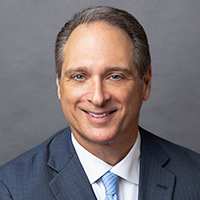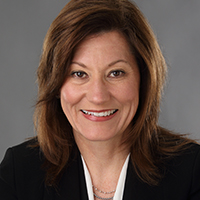CFOs display a united spirit as they investigate all options and share their ideas: partnering in unique ways with churches, law enforcement and mental health providers; investing in telehealth and virtual care tools; working directly with large employers; and getting beds in micro communities instead of the main hospital tower. These executives understand there is no one-size-fits-all solution to the challenge of providing excellent and accessible care; each community’s specific needs must be determined, along with an accurate inventory of what resources already exist as possible partners for healthcare providers.
At that point, hospitals and healthcare systems can decide where to invest and how — and whom to partner with in order to improve access to all members of the community. Although CFOs report this approach is yielding successes, many communities lack the financial resources needed to close the access gap.
Q: What should healthcare providers expect post-election and into 2025?
The consensus is that the national election results will not change anything quickly for healthcare organizations; the results will not fundamentally disrupt the healthcare ecosystem. However, our panel agreed there are a few things to keep an eye on.
One is the stock market's performance in response to the election results. Everyone is eager to see markets continue on a tear as they have for most of 2024, setting new records — only to break them again. Is that sort of performance sustainable? CFOs, of course, are concerned about the impact of a downswing and possible interest rate cuts on their organizations' investment portfolios, potentially affecting both balance sheet strength and cash positions.
Second, healthcare executives are watching to see what happens at the Federal Trade Commission, whose recent priorities have produced a mixed bag for healthcare organizations. While the Biden era FTC scrutinized possible mergers that were perceived to lessen consumer choice within specific markets, it simultaneously allowed mergers of larger systems across geographic regions. Will this change under the new administration? Stay tuned.
Finally, panelists are concerned about the integrity and sustainability of the federal 340B program, which has been a target of some pharmaceutical companies. Will the U.S. Congress clarify and preserve the intent of the program, which many patients and hospitals in rural and safety net areas depend on? Could it be a target for legislative action — and if that were to happen, what would the financial impact be on healthcare systems? This is one of several areas that seem ripe for legislative action by the 119th Congress.
Q: If we could choose one thing, what could we do to create a sustainable healthcare system that makes the reimbursement process more manageable while protecting patient care?
Taking a holistic view, the roundtable participants discussed a few key ideas. One was revising and simplifying the diagnosis-related group (DRG) system. A second was addressing the mental health care gap in our current system by adding capacity and working toward an agreement on reimbursement that places fair value on that important part of patient care. Third was unifying Medicare and Medicaid to manage the stability of the 340B program. And lastly — but foundationally important to keeping everything else running — the group discussed the importance of moving or evolving to a less complex payor philosophy in our national healthcare system.






